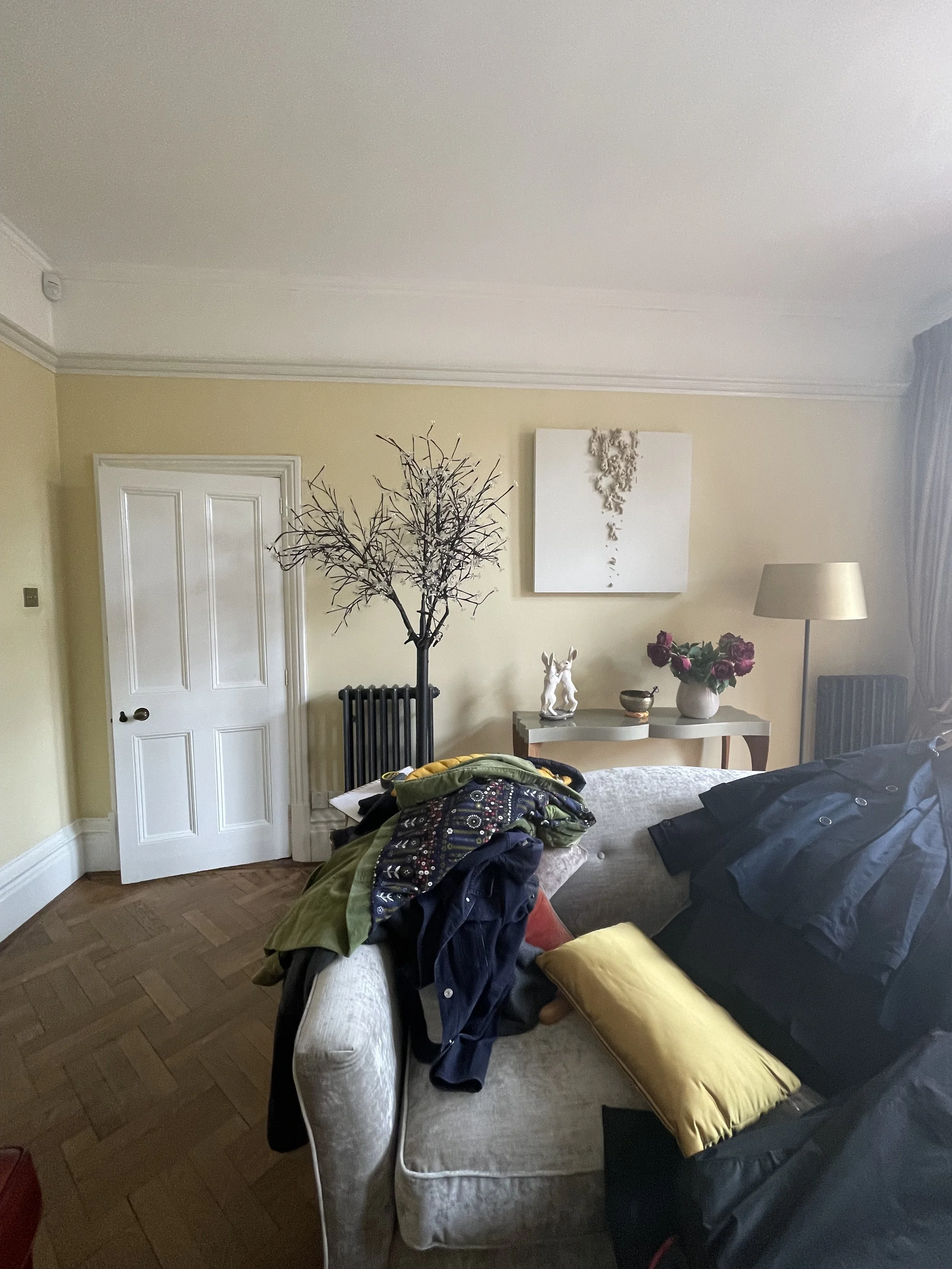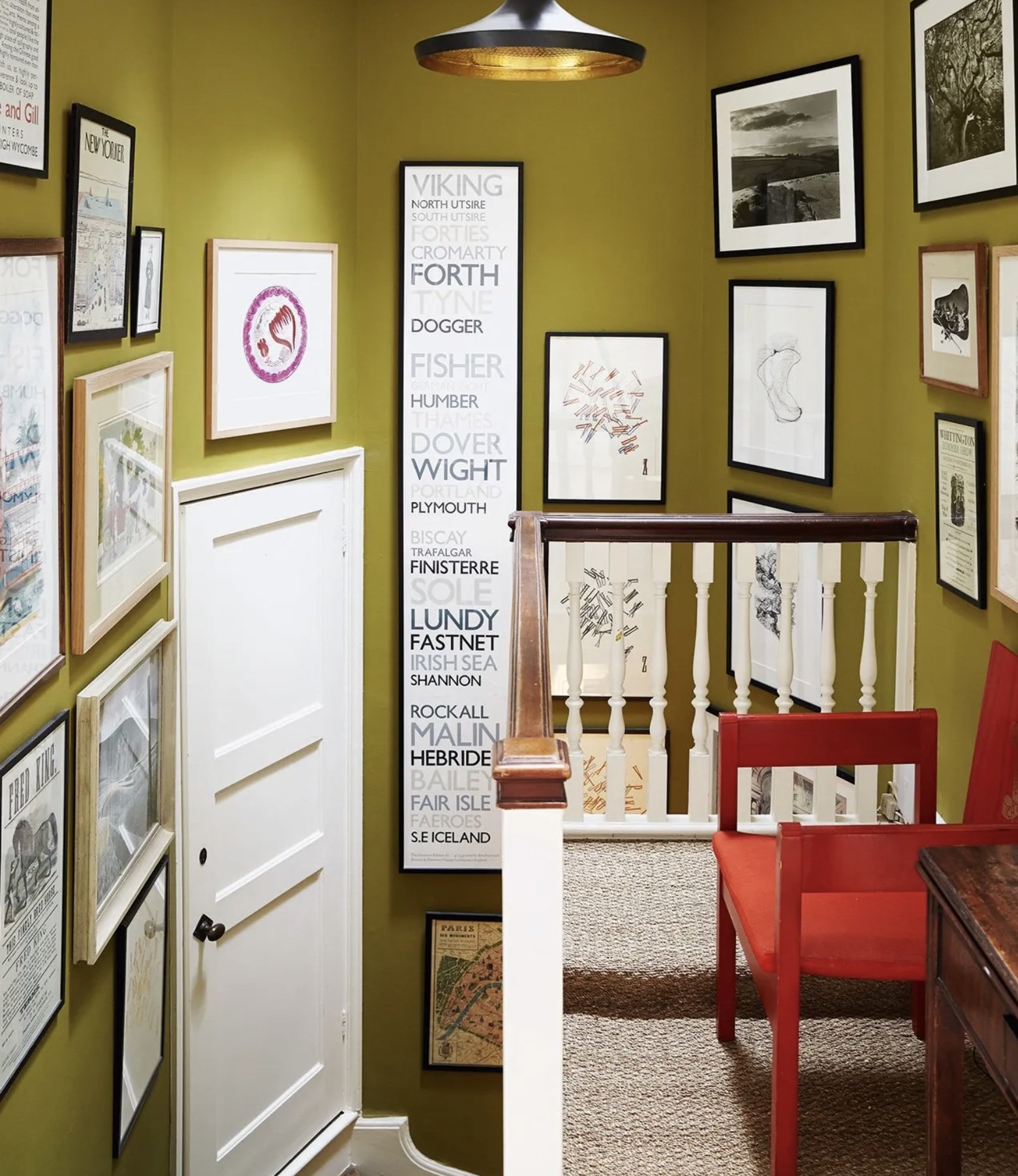CURATED: ART
EDITION 01
Affordable Art Fair, Battersea. Photographer credit to follow.
I WAS on a shuttle bus heading from The Affordable Art Fair’s Battersea home to Sloane Square station when I overheard (OK, eavesdropped) a couple discussing their art purchases, or more specifically, the distinct lack of.
“It’s a bit overwhelming,” I heard them confess to another couple sitting across the aisle. “We’re fine at buying things like vases for the house, but we have loads of blank walls. It’s relaxing to wander round these fairs but, after a while, you forget what you saw and leave with nothing.”
As we disembarked at Sloane Square and the couple bid their goodbyes, they laughed: “We’ll probably see you again next year! And the year after that!”
This conversation really stuck a chord with me.
Buying art to hang on your wall is a huge decision, particularly when budget is a key consideration. Most people – our couple on the bus – go into it ‘hoping’ to be struck by something that is reasonably affordable that will quite literally fill a hole.
Buying art is of course not like buying a sofa, or an oven. Art is not something you ever really, actually need. Art is a nice-to-have, putting it very low on the priority list but, ironically, very high on the list of expectations.
A piece of art has to DELIVER. This is money that could be spent on OTHER THINGS.
So, people wait, and they browse and they live with empty walls. Sometimes for years.
So how DO you confidently buy art and where should you go to find it?
As with most things, the key is in the planning & preparation….
This spot over my own living room mantle remained empty for four years after the room was ‘finished'. (In my defence, this was mainly through the pandemic)
SELECT
HOW TO CHOOSE ART AND MY FAVOURITE PLACES TO FIND IT
1. The first step is, do your research. What sort of art do you like? Prints or paintings? Contemporary or traditional? Geometric or painterly? Visit art fairs, galleries and antique markets for inspiration. Take & save photos, notice the work that you’re drawn to & give artists & galleries a follow on social media. This will help you narrow down the type of art you would enjoy looking at in your home and give you confidence in choosing.
2. Note your dimensions. This is absolutely key to finding a piece, as there will absolutely be an optimum size range for the wall you’re looking to fill. If necessary, use masking tape to tape out the dimensions on the wall to get a sense of the proportions and orientation. Save these measurements in your phone notes so you always have them to hand, and carry a tape measure in your bag.
3. Set a budget. This will look different to everyone – and vary for different spots around the house - but decide what you would be comfortable spending and ring-fence the funds so when the moment arrives, you’re ready to make a purchasing decision.
4. Start an active search.
Sources:
Art fairs are temporary marketplaces where galleries showcase works and are a great place to find art. My favourite London fair is The Affordable Art Fair held in Battersea Park in March and October and in Hampstead in May.
Art Galleries can be found in every town, dealing in everything from fine art to emerging creators. In London, I love Cricket Fine Art and M.A.H Gallery. Independent galleries often showcase new, undiscovered artists, so are always worth a look, my favourite local independent gallery is Prince & Pilgrim Gallery in Richmond.
Graduate showcases - Every summer art schools across the UK showcase the work of students graduating. A handpicked selection of new talent is represented by Degree Art which runs an artists’ residency at Somerset House and takes part in fairs throughout the year.
Online galleries are great for research (although nothing substitutes viewing a piece of art in person.) I like Partnership Editions and Art-Movement both of which also offer art consultancy services to help you source the perfect piece.
Other great online resources are: -
Artnet
The Paper Collective
East Side Studio London
The Poster Club
King & McGaw
Desenio
Glassette
Antique markets, marketplaces and auction houses are great sources of art, often sold in vintage or gilt frames that are pieces of art in their own right. I’ve discovered countless gems at Sunbury Antiques Fair, The Decorative Fair at Battersea, Vinterior and, on my travels, in French brocantes.
5. Buy what you love. If you’ve done your research, you’ll know what you’re looking for and you'll know when you find it. It may take some time (another reason my living room piece took me so long!) but trust your instincts. If it’s the right size, the right price (there may be a payments plan if not) and you love it, take the plunge. The piece I bought for my living room, I spotted from some distance as I browsed various gallery stands at an art fair. I raced towards it, heart pounding, tape measure in hand, knowing this was the one and praying it was big enough proportionately to make an impact in the space, and that it was somewhere in my budget. It was.
Artwork: Bridging the Oceans by Barry Cawston
ORGANISE
DO’S & DONT’S FOR PLACING ART IN YOUR HOME
1. Make sure art is proportionate to the space. If it’s a large space you’ll need a bigger piece, or several pieces of art, to fill the space and create impact.
2. Hang larger pieces alone to create more impact.
3. Use medium and smaller-sized pieces as part of a collection. Small pieces can also work well in a niche or forgotton corner.
4. Hang pictures so the centre of the piece is at eye level, so 145-152cm from the floor. The most common interior design mistake I see in people’s homes is art work that is hung too high!
This ‘before’ image taken a recent client project shows artwork hung too high
5. Leave a 10-15cm gap if placing art above a piece of furniture or mantelpiece. The eye-level rule need not apply. In my own living room example above, the piece is 10cm above the bottom edge of panelling (rather than the mantel).
6. When grouping art, arrange it on the floor to plan layout & spacing. Hang the largest piece first and build around it. Pinterest is full of handy gallery wall layout template inspiration.
7. Use statement pieces to create focal points in main living spaces – hallways, living rooms, kitchens, dining rooms.
I suggested this artwork by Hannah Ludnow to my clients for a recent project, and they loved it. I was drawn to the colours (repeating the pink in the sofa & black in the hearth). It also met the required dimensions, orientation & budget. (Image Chris Snook)
PRESENT
HOW ART CAN ELEVATE YOUR HOME
1. A mantelpiece is a focal point and should always have a piece of art hanging over it. A mirror over a mantel is usually a missed opportunity, in my opinion. Imagine the scene above with a mirror hung over the mantel instead of the artwork. You see?
2. They say never match your art to the colour of your room, but there should be some connection between your artwork & your colour palette, e.g repeating a colour in the room in your art (see above example), or juxtaposing contrasting colours (see below example)
In this scheme by HAM Interiors, a bold pop of orange contrasting against the blue walls brings this room to life. The warm orange notes are also repeated in the rug. Photographer : Alexander James.
3. A gallery wall collection should share some commonality, be that repeating colours, frames, mood etc across the collection. You can of course include things other than pictures.
4. The place for family photographs is on a desk/console or hung as part of a personal gallery wall. These images tend to work better in black & white and as part of a collection. Family snaps are not art and that includes that large Ventura photo shoot piece (sorry not sorry) 😊
5. Destination art & photograpy are mementos and works best hung as part of a personal gallery wall collection, unless the home that you’re designing is IN THAT DESTINATION. That watercolour of Watergate Bay looks a lot better in Cornwall than Croydon, trust me.
6. Personal gallery walls work well in more intimate spaces (cloakrooms, studies, bedrooms) and to fill space on stairs/landings.
The London home of designer Ben Pentreath. Note the personal nature of some of the pieces, the primarily monochrome theme unifying the collection and the pops of pink and red providing contrast to the green walls. Perfection. (Photographer: Jake Curtis)
7. Art depicting a view is a great way to decorate a window-less room, a long wall, or a room that feels closed in, creating a sense of something outside the space.
8. Hang contemporary art in old buildings, it brings a fresh, updated feel.
9. Photographs make great art pieces and are one of my favourite ways to decorate walls. As a former journalist I’ve always loved reportage photography and am drawn to photographs that capture a moment, or a human narrative. Architectural and arial photography can create brilliant, breath-taking compositions. Some of my favourite art photographers are:-
Candida Höfer
Slim Aarons
Gray Malin (not the dogs! sorry)
Natalie Obradovich
Julia Fullerton-Batten
Tom Blachford
Fine Art America has thousands of photographic images that can be bought as large-scale prints (up to 150cm x 100cm). Get them framed by a local framers to keep shipping costs down (for this, Just Good Frames in Richmond are my favourites locally!)
Feel free to share any art tips or local resources you might have in the comments below! For now, ‘Happy Arting!’
‘Party at Romanoff’s’ by Slim Aarons sourced for a client’s guest bedroom. Art photograph from Fine Art America.








